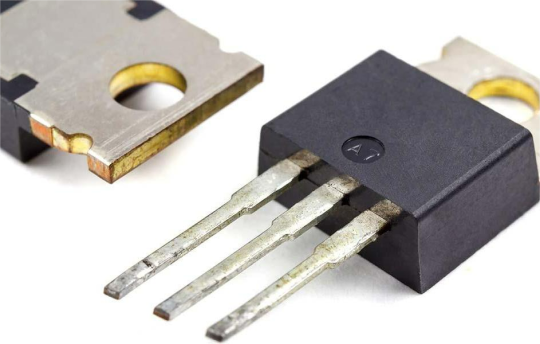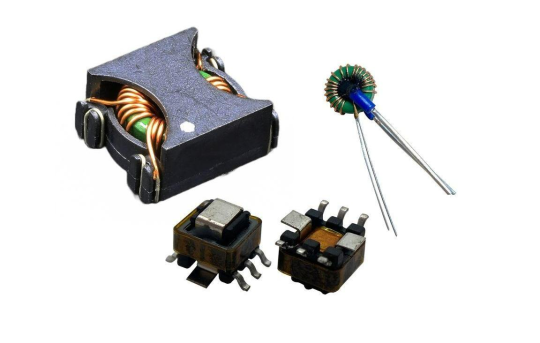An electronic components enthusiast from SMYG LIMITED company!
Don't wanna be here? Send us removal request.
Text
What are Low Dropout Regulators?

A Low Dropout Linear Regulator (LDO) is an integrated circuit that can maintain a stable output voltage even when the input voltage is very close to the output voltage. Compared with traditional linear regulators, an LDO only needs a small voltage difference—typically tens to hundreds of millivolts—to maintain a steady output. This makes it particularly suitable for battery-powered devices because it maximizes the use of available battery energy.
Get more details: What are Low Dropout Regulators?
#electronics#integrated circuits#semiconductor#components#electronic#chips#module#electronic devices#manufacturing#capacitors
0 notes
Text
What Are Rotary Switches?

Rotary switches are a type of electromechanical switch that use a rotating shaft to drive an internal contact mechanism, changing the electrical connection paths. The main components include a rotating shaft, contacts, a detent mechanism, and a housing. When a user turns the shaft, the contacts move and connect with fixed terminals in different combinations, enabling circuit switching. Based on internal design, rotary switches can be classified into mechanical contact types and non-contact types.
Get more details: What Are Rotary Switches?
#electronics#integrated circuits#semiconductor#components#electronic#module#chips#electronic devices#manufacturing#switches
0 notes
Text
What is PhotoMOS?

PhotoMOS (photo MOS relay) is a type of solid-state switch built on semiconductor structures. Its core consists of an LED on the input side and a power MOSFET on the output, linked through a photosensitive element that provides electrical isolation and signal transmission. Unlike traditional mechanical relays that use an electromagnetic coil to drive physical contacts, PhotoMOS relays have no moving parts at all—they're contactless. This key difference gives them the safety isolation of an optocoupler and the power control capability of a MOSFET in one package.
Get more details: What is PhotoMOS?
#electronics#integrated circuits#semiconductor#components#electronic#module#chips#electronic devices#manufacturing#photomos
1 note
·
View note
Text
What Are Voltage References?

A voltage reference is an electronic component or circuit designed to provide a stable and accurate reference voltage. No matter how much the input voltage, load, or surrounding temperature changes, it keeps its output voltage steady. Because of this stability, voltage references are critical baseline standards in many precision electronic systems, making sure measurements and controls are accurate.
Get more details: What Are Voltage References?
#electronics#integrated circuits#semiconductor#components#electronic#module#chips#electronic devices#manufacturing#voltage reference
0 notes
Text
What Exactly Is a DIP Switch?

A DIP switch (short for Dual In-line Package switch, sometimes called a "DIP toggle") is a set of tiny manual switches arranged in a standard DIP format—meaning the pins are in two parallel rows. These switches are mounted directly onto a printed circuit board (PCB) and used to configure hardware settings or control functions in electronic devices.
Get more details: https://www.smbom.com/news/42491
#electronics#integrated circuits#semiconductor#components#electronic#module#chips#electronic devices#manufacturing
0 notes
Text
What Are SAW Resonators?

SAW resonators—short for Surface Acoustic Wave Resonators—are electronic components that use the piezoelectric effect to generate and propagate acoustic waves along the surface of piezoelectric materials. Through specialized structural design, they achieve frequency selection and oscillation control.
Get more details: What Are SAW Resonators?
#electronics#integrated circuits#semiconductor#components#electronic#module#chips#electronic devices#manufacturing#resonator
0 notes
Text
What Are Buzzers?

A buzzer, also known as a sounder, is an electroacoustic component that converts electrical signals into audible sound signals. Typically powered by DC voltage, a buzzer emits a “beep” or other tone to provide alerts, warnings, or operational feedback. In circuit diagrams, buzzers are often represented by symbols such as “H” or “HA.”
Get more details: What Are Buzzers?
#electronics#integrated circuits#semiconductor#components#electronic#module#chips#electronic devices#manufacturing#buzzer
0 notes
Text
What is a Field-Effect Transistor?

A Field-Effect Transistor is a three-terminal device that controls current flow through a semiconductor by using an electric field. It consists of three electrodes: the Source, Drain, and Gate. By applying a voltage to the gate, the conductivity of the semiconductor channel can be changed, thereby controlling the current between the source and drain.
Get more details: What is a Field-Effect Transistor?
#electronics#integrated circuits#semiconductor#components#electronic#module#chips#electronic devices#manufacturing#transistors
0 notes
Text
What Are Current Sense Transformers?

A Current Sense Transformer is an electronic component that measures current based on magnetic induction. It typically consists of a primary winding (or conductor) and one or more secondary windings. When current flows through the primary conductor, it generates a magnetic field, which induces a proportional voltage or current in the secondary winding—enabling isolated, non-contact current sensing.
Get more details: What Are Current Sense Transformers?
#electronics#integrated circuits#semiconductor#components#electronic#module#chips#electronic devices#manufacturing#transformers
1 note
·
View note
Text
What Is a Transformer?

A transformer is a device that uses the principle of electromagnetic induction to convert alternating current (AC) electrical energy from one voltage level to another. It consists of three main parts: the primary coil, the secondary coil, and the iron core. By adjusting the turns ratio between the primary and secondary coils, the transformer can either step up or step down voltage. Additionally, transformers provide electrical isolation between circuits, ensuring the safety of both devices and users.
Get more details: What Is a Transformer?
#electronics#integrated circuits#semiconductor#components#electronic#module#chips#electronic devices#manufacturing#capacitors
0 notes
Text
What Are PTC Resettable Fuses?

A PTC (Positive Temperature Coefficient) resettable fuse is a protective component designed based on the polymer's positive temperature coefficient effect. Its core material consists of a polymer composite embedded with conductive carbon black particles. Under normal conditions, the fuse maintains a low resistance state.
Get more details: What Are PTC Resettable Fuses?
#electronics#integrated circuits#semiconductor#components#electronic#module#chips#electronic devices#manufacturing#capacitors
0 notes
Text
What Are Power Line Filter Modules?

Power line filter modules are electronic components used in both AC and DC power systems. Their primary function is to suppress high-frequency noise interference either introduced from external sources or generated within the equipment itself, preventing these disturbances from propagating through the power lines. Typically, these modules integrate passive components such as inductors and capacitors, forming common-mode and differential-mode filter circuits. Advanced modules may also incorporate active compensation circuits to dynamically suppress high-frequency interference.
Get more details: What Are Power Line Filter Modules?
#electronics#integrated circuits#semiconductor#components#electronic#module#chips#electronic devices#manufacturing#capacitors
0 notes
Text
What Are EMC Filters?

EMC filters, or Electromagnetic Compatibility filters, are electronic components designed to suppress electromagnetic interference signals and enhance the anti-interference capability of electronic devices. They achieve this by filtering out high-frequency noise present on power lines or signal lines, preventing the spread of interference and ensuring devices comply with electromagnetic compatibility standards such as IEC and FCC.
Get more details: What Are EMC Filters?
#electronics#integrated circuits#semiconductor#components#electronic#module#chips#electronic devices#manufacturing#fliters#EMC
0 notes
Text
What Are Active Filters?

Active filters are analog filter circuits built using operational amplifiers, resistors, and capacitors. Unlike traditional passive filters, which rely on inductors, active filters use active components to provide gain, thereby boosting their signal processing capabilities.
Get more details: What Are Active Filters?
#electronics#integrated circuits#semiconductor#components#electronic#module#chips#electronic devices#manufacturing#filter
0 notes
Text
What Are RF Detectors?

An RF detector is an electronic component designed to sense the strength of radio frequency (RF) signals and convert them into a corresponding DC voltage or digital signal. They are widely used in wireless communication devices, test and measurement instruments, and security equipment, playing a critical role in power monitoring and signal strength feedback.
Get more details: What Are RF Detectors?
#electronics#integrated circuits#semiconductor#components#electronic#module#chips#electronic devices#manufacturing
0 notes
Text
What Are Rectangular Connector Housings?

The WYSBHVGXG is a compact wireless module that combines WLAN and Bluetooth (BT) capabilities into a single package. Built using IEEE 802.11a/b/g/n/ac standards, it enables seamless wireless communication for high-speed data transfers and energy-efficient Bluetooth Low Energy (BLE) connections. Designed in a compact LLCC package with 70 pins, it's ready for surface mount applications, making it ideal for integration into a wide range of embedded systems.
Get more details: What Are Rectangular Connector Housings?
#electronics#integrated circuits#semiconductor#components#electronic#module#chips#electronic devices#manufacturing#connectors
0 notes
Text

A battery connector is an electronic component designed to connect batteries to circuits, ensuring stable power transmission and signal communication between the power source and the main device. These connectors offer core functionalities such as pluggability, conductivity, mechanical stability, and insulation—ensuring both reliable performance and ease of maintenance.
Get more details: What Are Battery Connectors?
#electronics#integrated circuits#semiconductor#components#electronic#module#chips#electronic devices#manufacturing#connectors#icchips#ICs#battery
1 note
·
View note